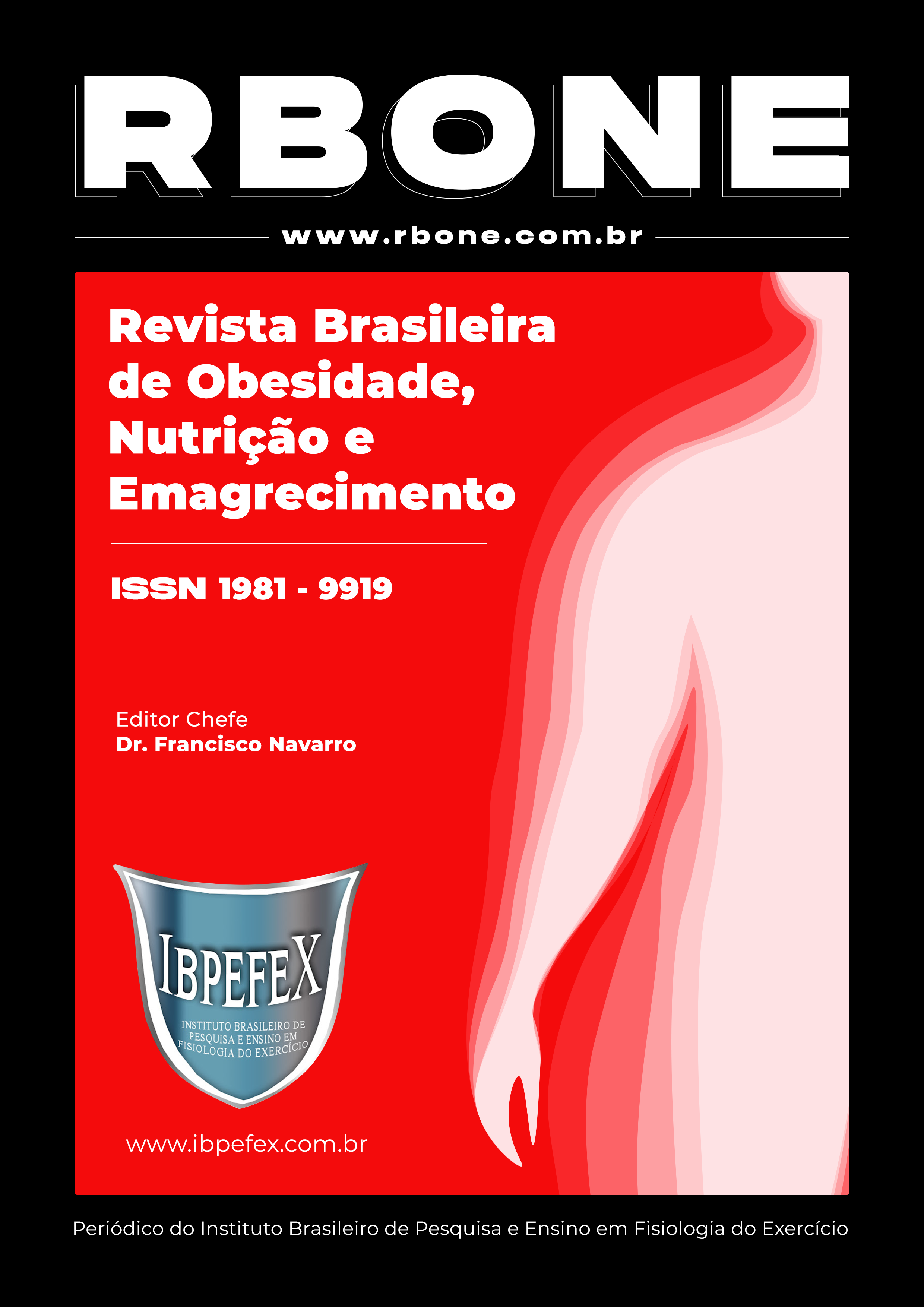Anthropometric biomarkers and iron deficiency in obese women: a systematic review
Abstract
It appeared that a deficiency, a deficiency, and a combination of two different conditions, but that are combined molecularly and if combined, are combined only molecularly and if combined. In this context, different hypotheses have suggested to elucidate the relationship between indicators of obesity and iron deficiency. One of the main hypotheses is related to the inflammatory process. This review aimed to analyze the relationship between anthropometric biomarkers and iron deficiency in adult women with obesity. The study carried out is a systematic literature review that used the PIOT strategy. The published bibliographic survey published in Medline and VHL databases, with the 2018 2021 studies being a survey with levels I, being of high statistical power, this review is considered safe in relation to its, level of involvement. The research with 4 exploratory articles, approaching anthropometric data and some biomarkers. When analyzing all the articles presented together, it can be inferred that overweight and obesity are a risk factor in women aged between 18 and 49 years. In addition, the metric perimeters of weights, BMI and the levels of increased weights related to the diminution of irons in the body of women. It was possible to have an increased likelihood of increased inflammation and leptin levels in obeos may reduce the availability.
References
-Ali, N.B.; Dibley, M.J.; Islam, S.; Rahman, M.M.; Raihana, S.; Bhuiyan, S.T.; Rahman, Q.S.; Rahman, H.; Arifeen, S.E.; Huda, T.M. Overweight and obesity among urban women with iron deficiency anaemia in Bangladesh. Maternal & Children Nutrition. Vol. 17. Num. 2. 2021. p. 131.142.
-Aigner, E.; Feldman, A.; Datz, C. Obesity as an emerging risk factor for iron deficiency. Nutrientes. Vol. 6. Num. 9. 2014. p. 3587-3600.
-Bekri, S.; Gual, P.; Anty, R.; Luciani, N.; Dahman, M.; Ramesh, B. Increased Adipose Tissue Expression of Hepcidin in Severe Obesity Is Independent from Diabetes and NASH. Revista Gastroenterology. Vol. 131. Num. 3. 2006. p. 788-796.
-Fatemeh, H.; Abiri, B.; Haghighizadeh, M.H.; Kayedani, G.A.; Birgani, N.K.; Association of Hematological Parameters with Obesity- Induced Inflammation Among Young Females in Ahvaz, South-West of Iran. International Journal of Preventive Medicine. Vol. 11. Num. 5. 2020. p. 55-62.
-Gibson, R.; Bailey, K.B.; Williams, S.; Houghton, L.; Costa-Ribeiro, H.C.; Mattos, A.P.; Barreto, D.L.; Lande, R.L. Tissue iron deficiency and adiposity-related inflammation in disadvantaged preschoolers from NE Brazil. European Journal of Clinical Nutrition. Vol. 68. Num. 14. 2014. p. 887-891.
-Jordann, E.; Van den Berg, V.L.; Van Rooyen, F.C.; Walsh, C.M. Obesity is associated with anaemia and iron deficiency indicators among women in the rural Free State, South Africa. South African Journal of Clinical Nutrition. Vol. 33. Num. 3. 2018. p. 72-78.
-Kerkadi, A.; Ali, R.M.; Alaa, A.H.; Abdelnasser, S.A.; Bawadi, J.H.; Shi, Z. Association between central obesity indices and iron status indicators among Qatari adults. Plos One. Vol. 5. Num. 2. 2021. p. 1-12.
-Pereira, A.L.; Bachior, M.M. Atualidades em revisão sistemática de literatura, critérios de força e grau de recomendação de evidência. Revista Gaúcha de Enfermagem. Vol. 27. Num. 4. 2006. p. 491.
-Rad, H.A.; Sefidgar, S.A.S.; Tamadoni, A.; Sedaghat, S.; Bakouei, F.; Bijani, A.; Omidvar, S. Obesity and iron-deficiency anemia in women of reproductive age in northern Iran. International Journal of Health Promotion and Education. Vol. 27. Num. 8. 2019. p. 115-126.
-Stoffel, N.; El-Mallah, C.; Herter-Aeberli, I.; Bissani, N.; Wehbe, N.; Obeid, O.; Zimmermann, M.B. The effect of central obesity on inflammation, hepcidin, and iron metabolism in young women. International Journal of Obesity. Vol. 44. Num. 6. 2020. p. 1291-1300.
-Panichsillaphakit, E.; Suteerojntrakool, O.; Pancharoen, O.; Nuchprayoon, I.; Chomthocorresponding, S. The Association between Hepcidin and Iron Status in Children and Adolescents with Obesity. Journal of Nutrition and Metabolism. Vol. 4. Num. 2. 2021. p. 87-99.
-Qin, Y.; Melse-Boonstra, A.; Pan, X.; Yuan, B.; Dai, Y.; Zhao, J.; Zimmermann, M.B.; Kok, F.J.; Zhou, M.; Shi, Z. Anemia in relation to body mass index and waist circumference among Chinese women. Nutrition Journal. Vol. 4. Num. 2. 2014. p. 12-21.
Copyright (c) 2022 Iraíldo Francisco Soares, Débora Thaís Sampaio da Silva

This work is licensed under a Creative Commons Attribution-NonCommercial 4.0 International License.
Authors who publish in this journal agree to the following terms:
- Authors retain the copyright and grant the journal the right of first publication, with work simultaneously licensed under the Creative Commons Attribution License BY-NC which allows the sharing of the work with acknowledgment of the authorship of the work and initial publication in this journal.
- Authors are authorized to enter into additional contracts separately for non-exclusive distribution of the version of the work published in this journal (eg, publishing in institutional repository or book chapter), with acknowledgment of authorship and initial publication in this journal.
- Authors are allowed and encouraged to post and distribute their work online (eg, in institutional repositories or on their personal page) at any point before or during the editorial process, as this can bring about productive change as well as increase impact and impact. citation of published work (See The Effect of Free Access).






